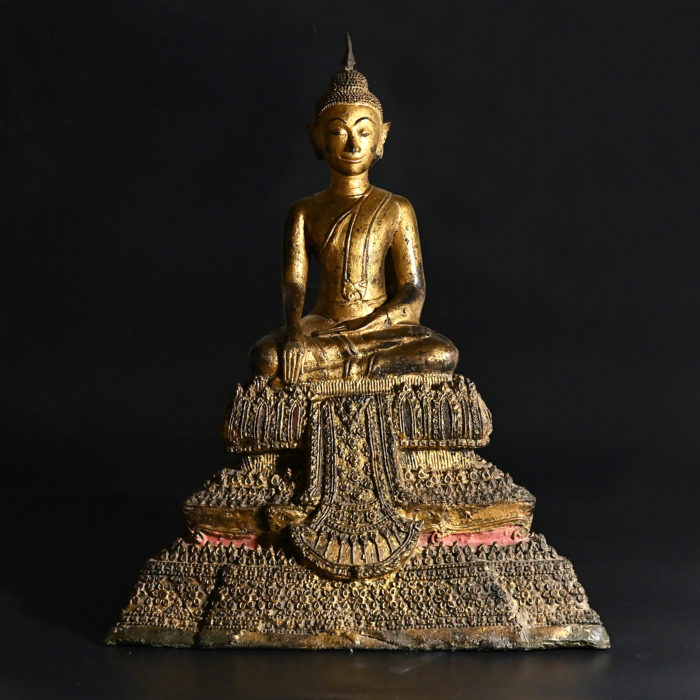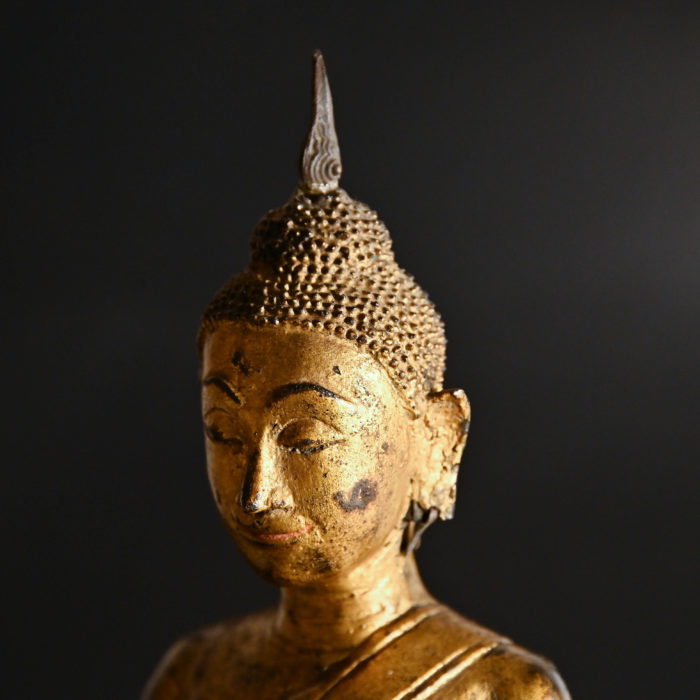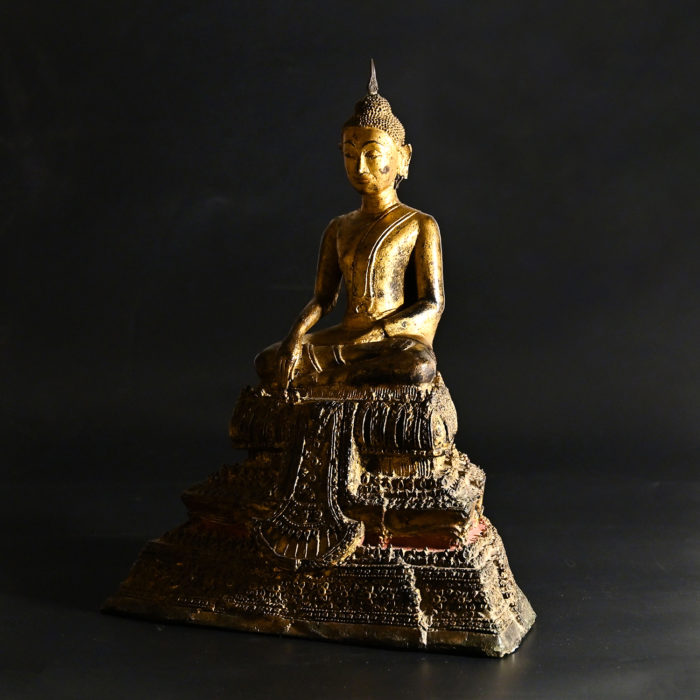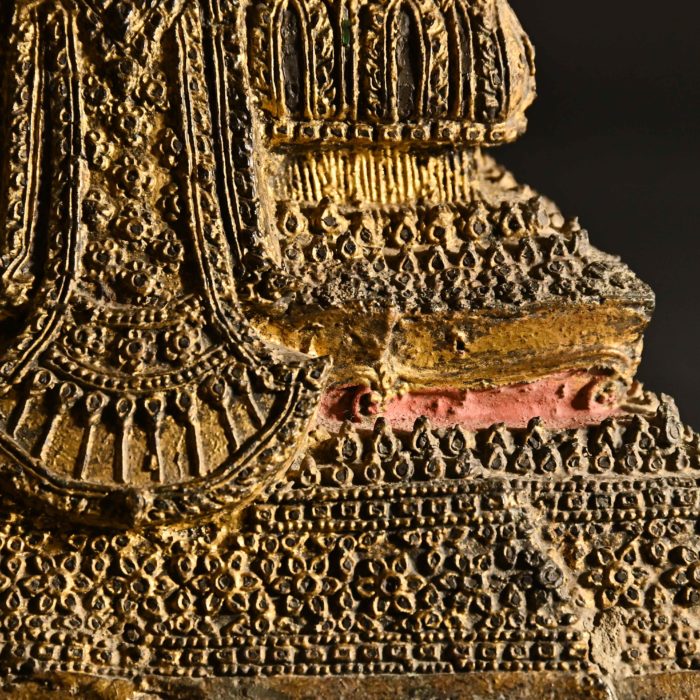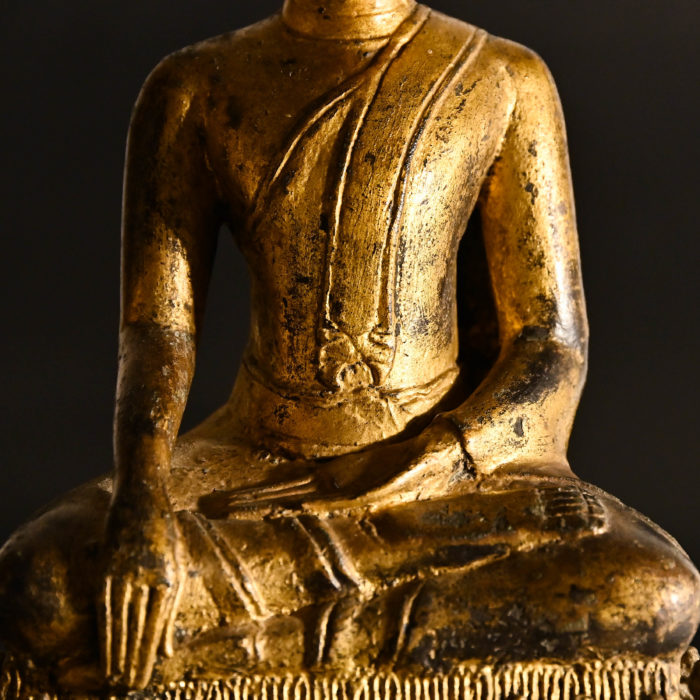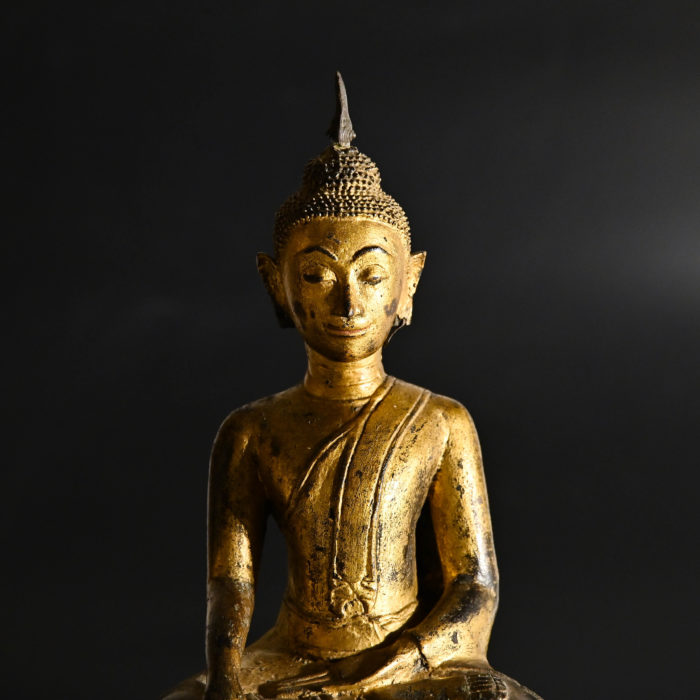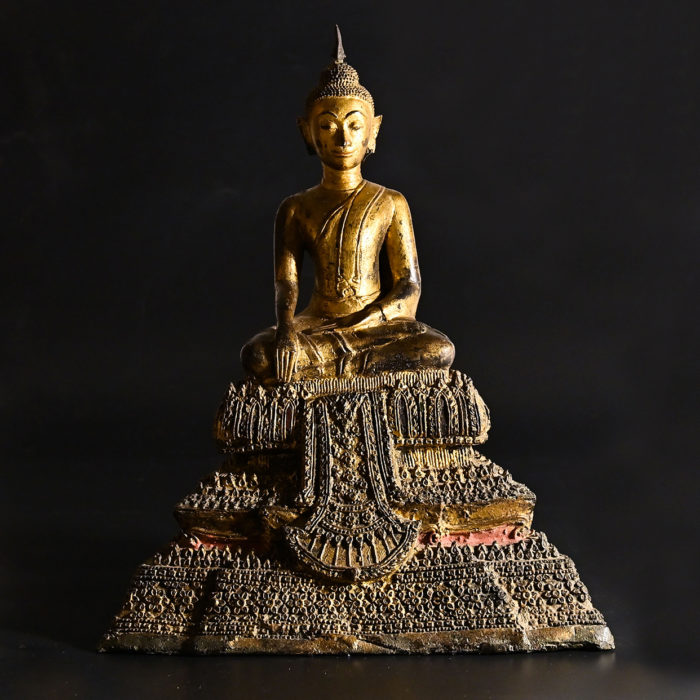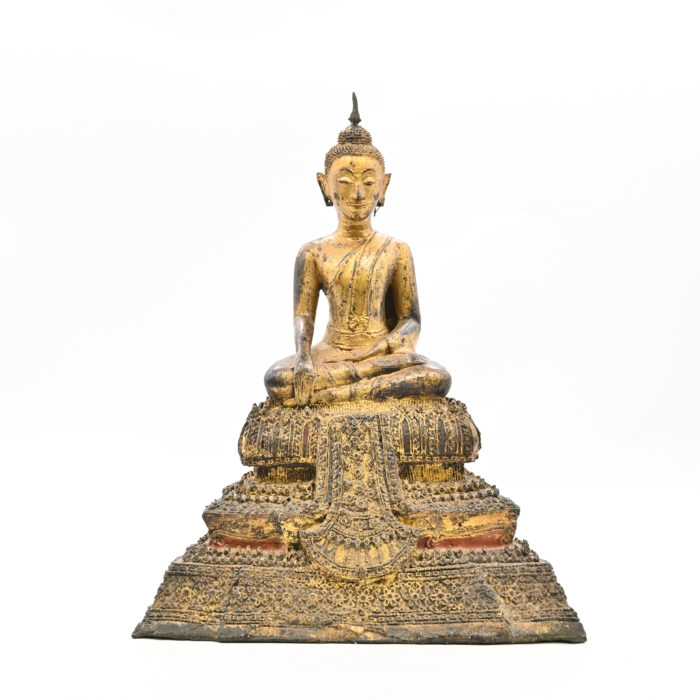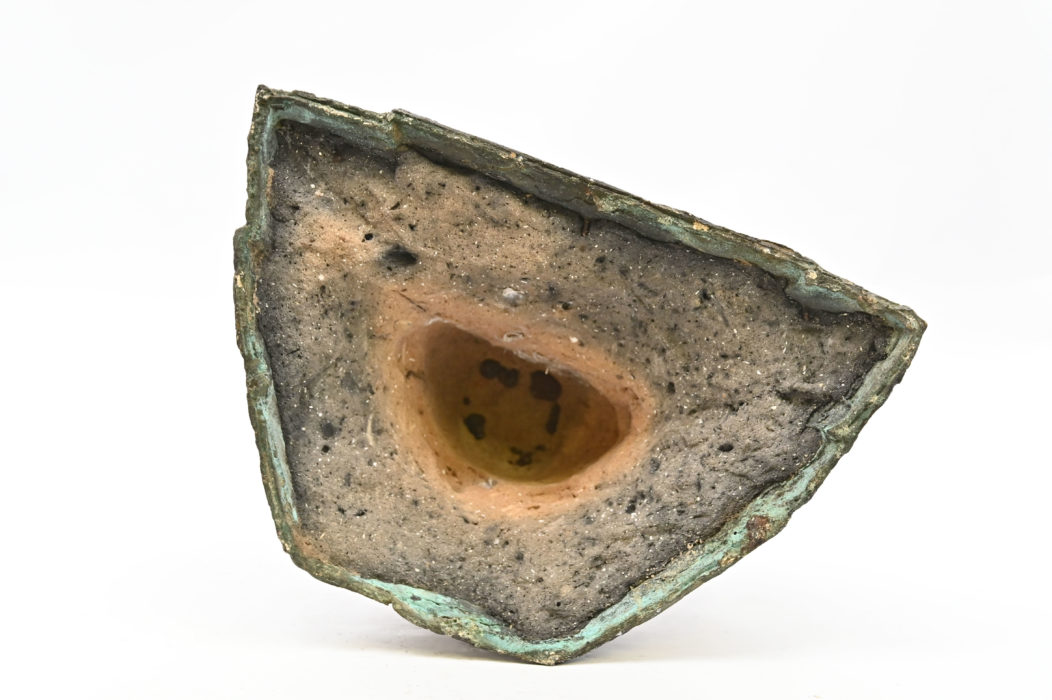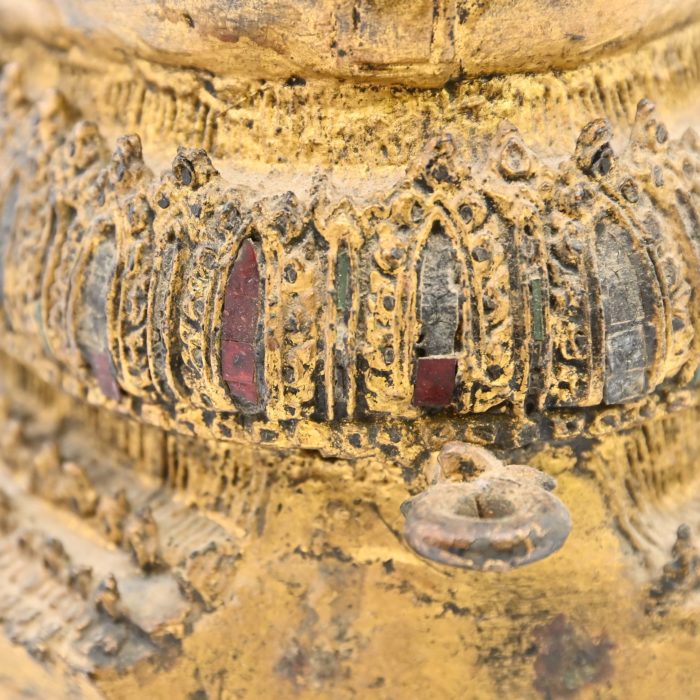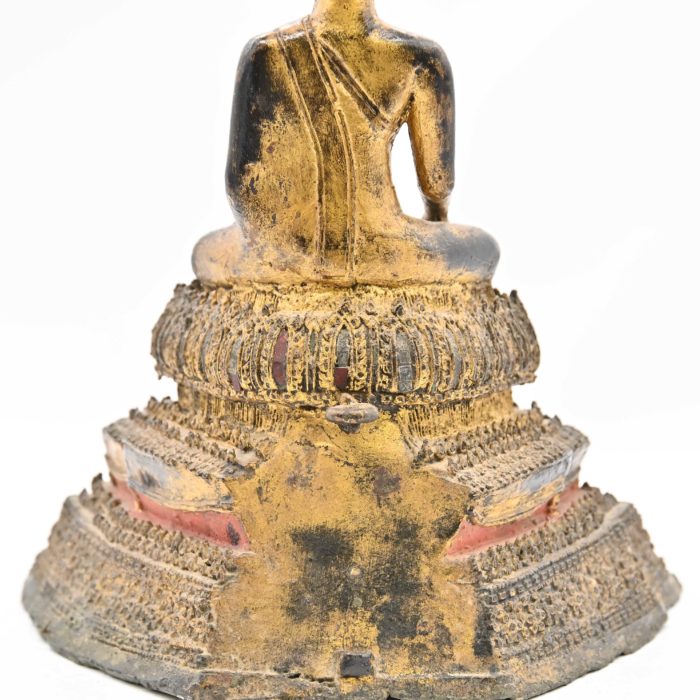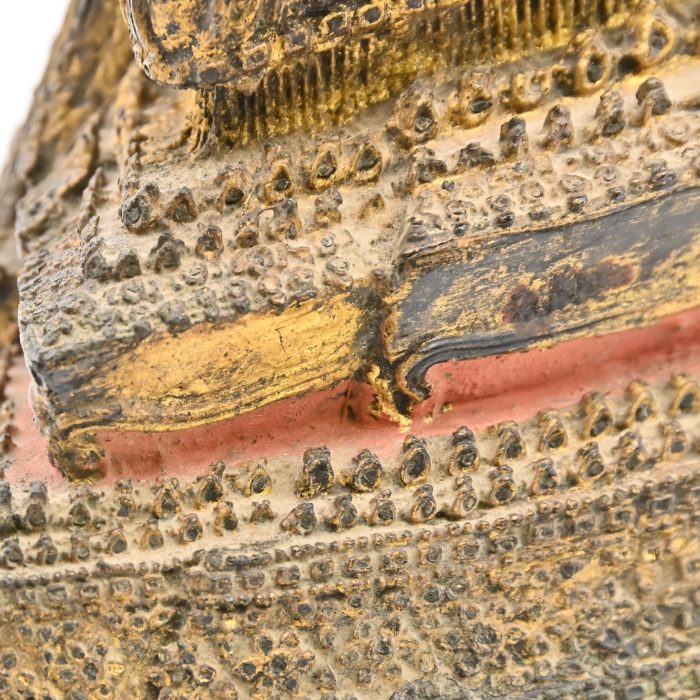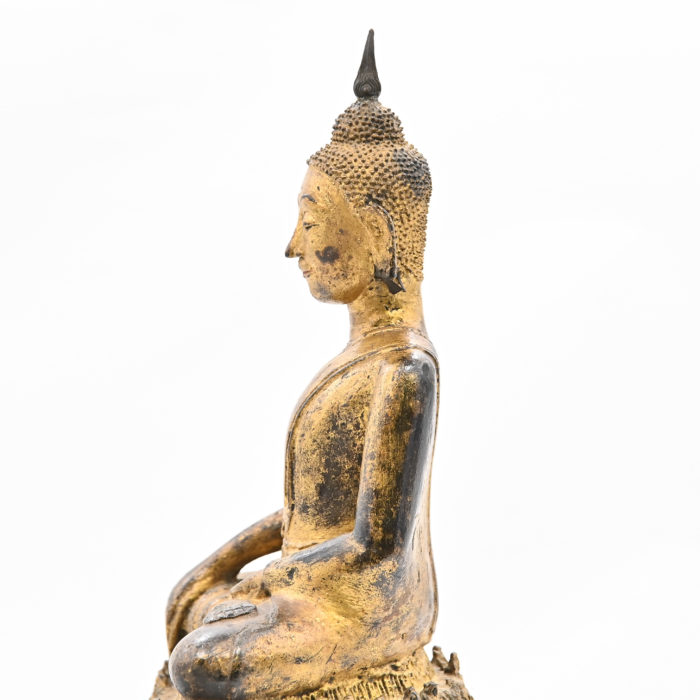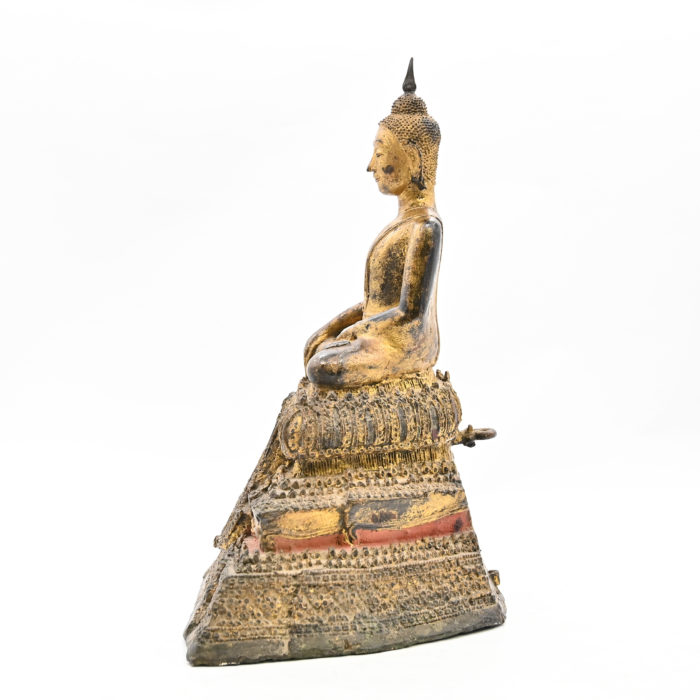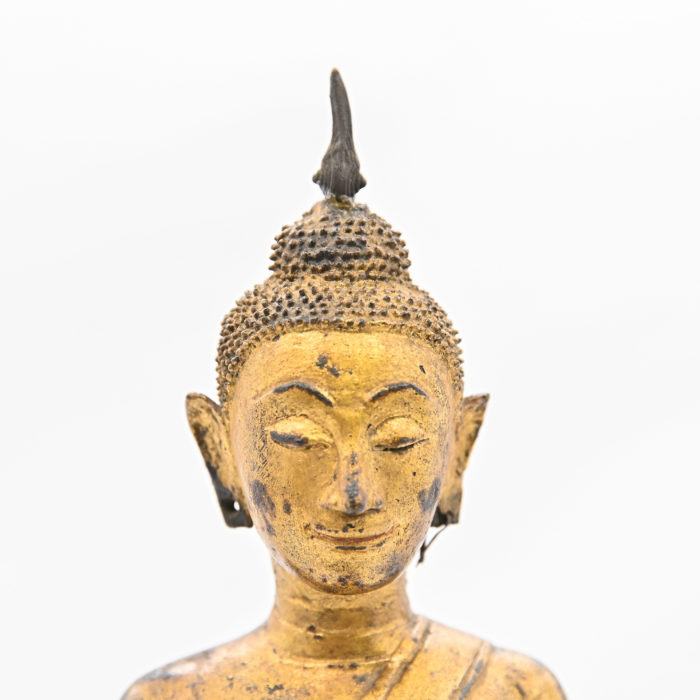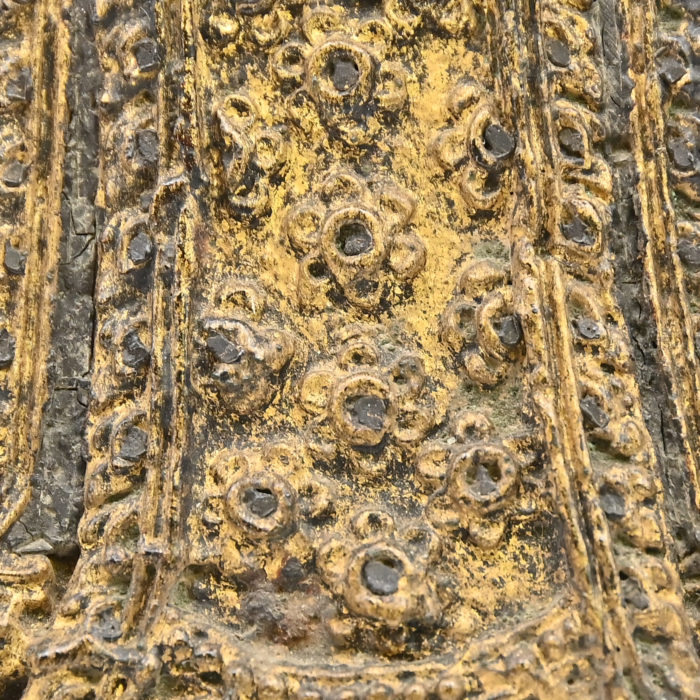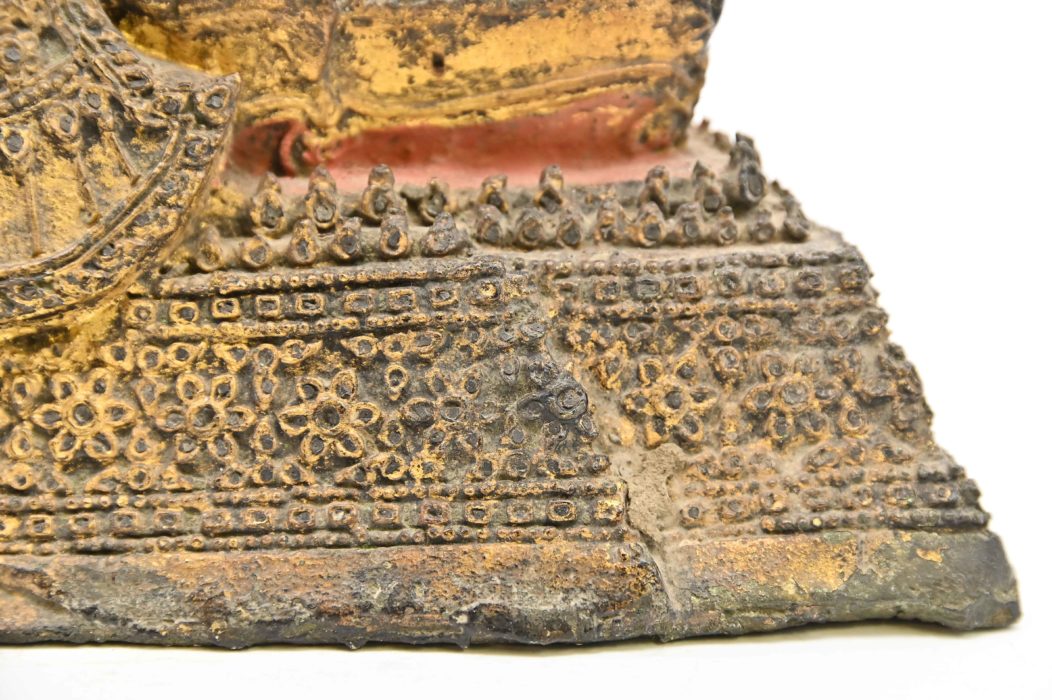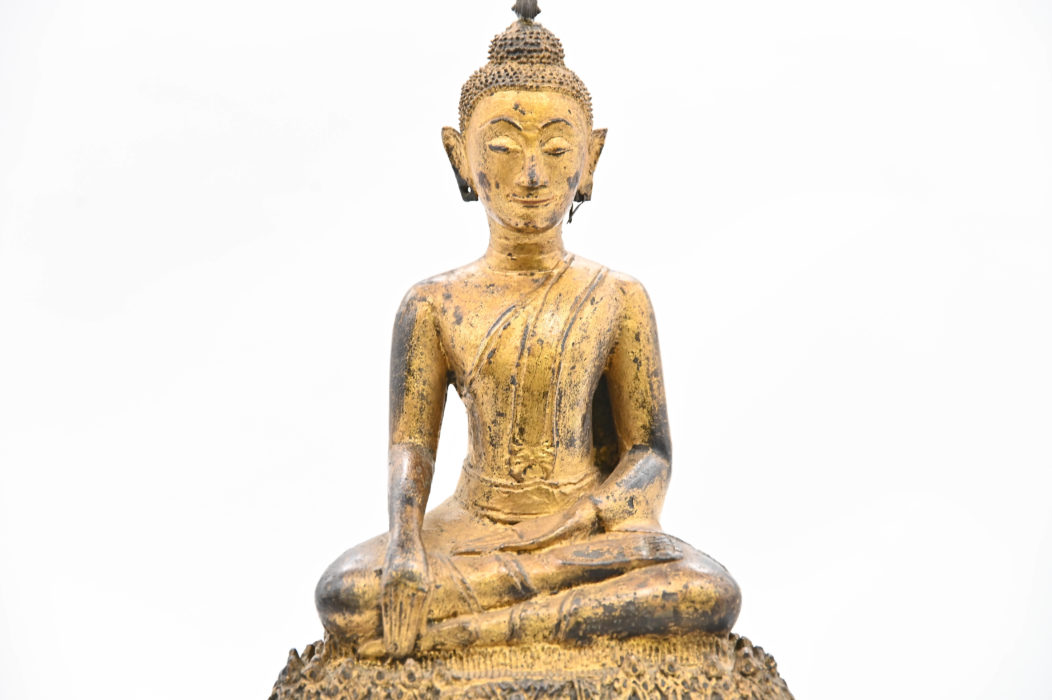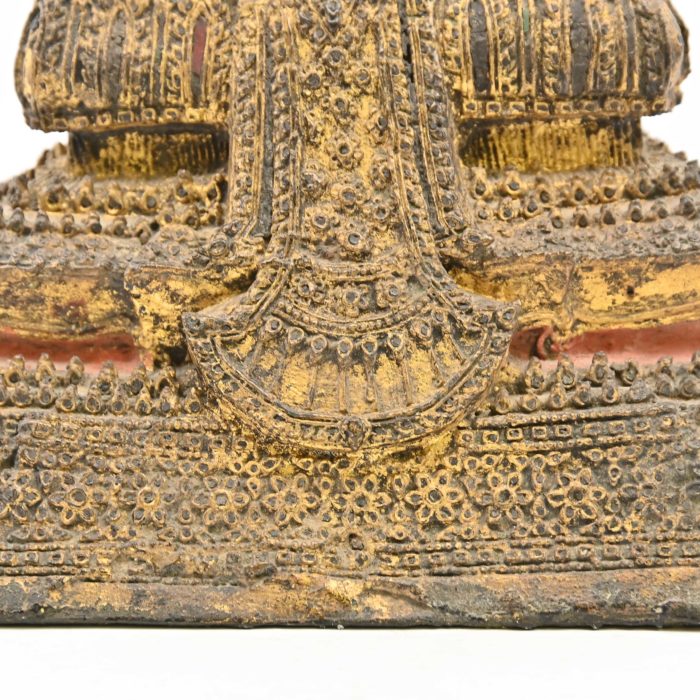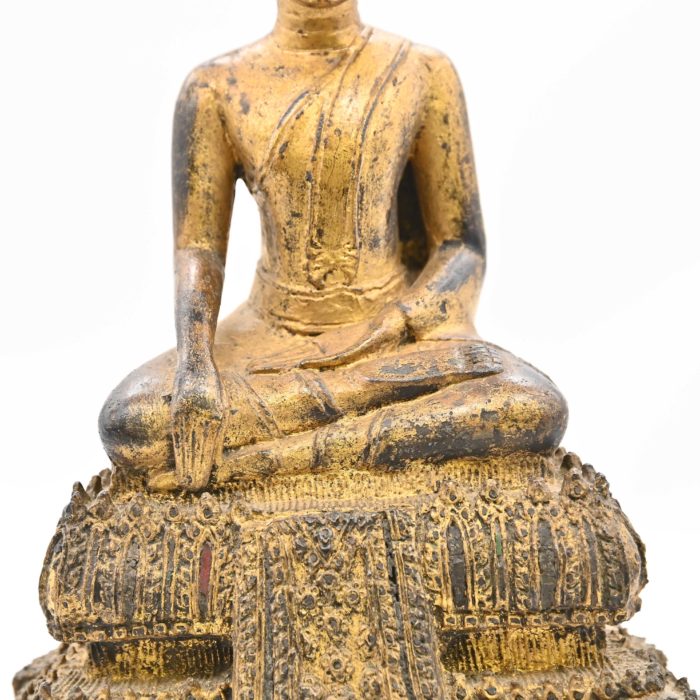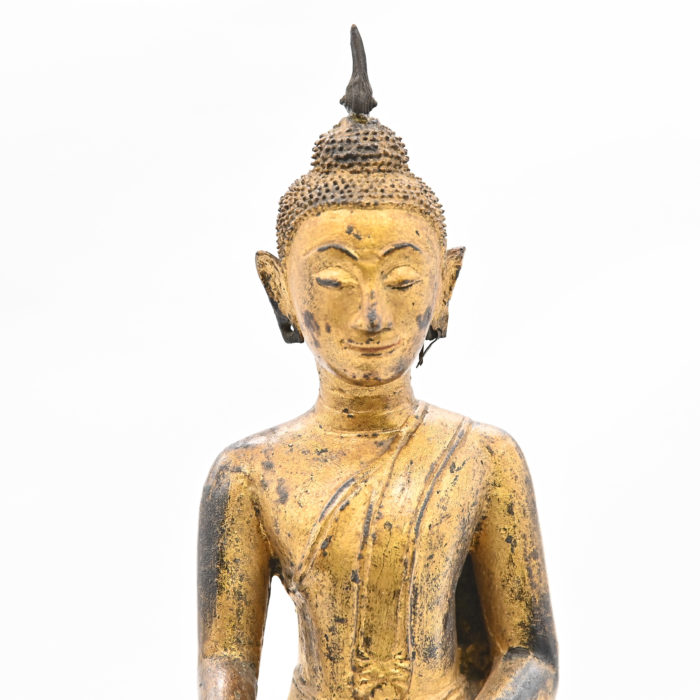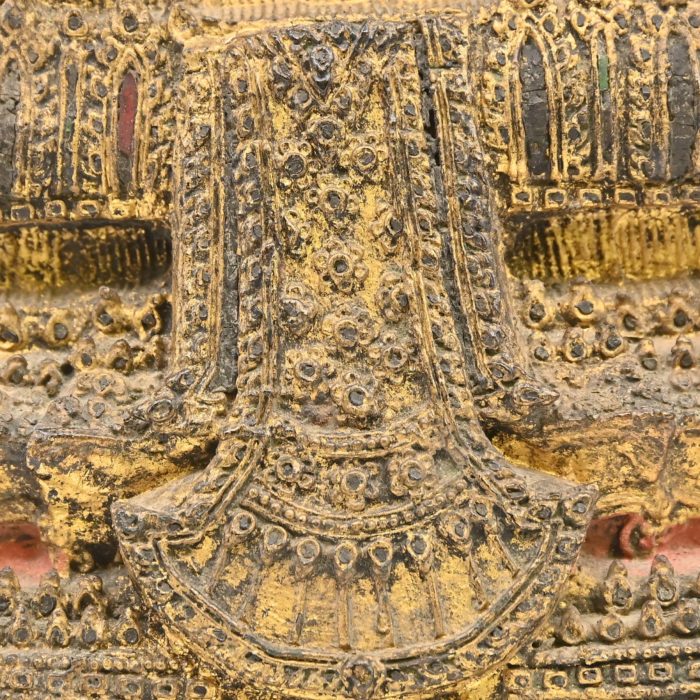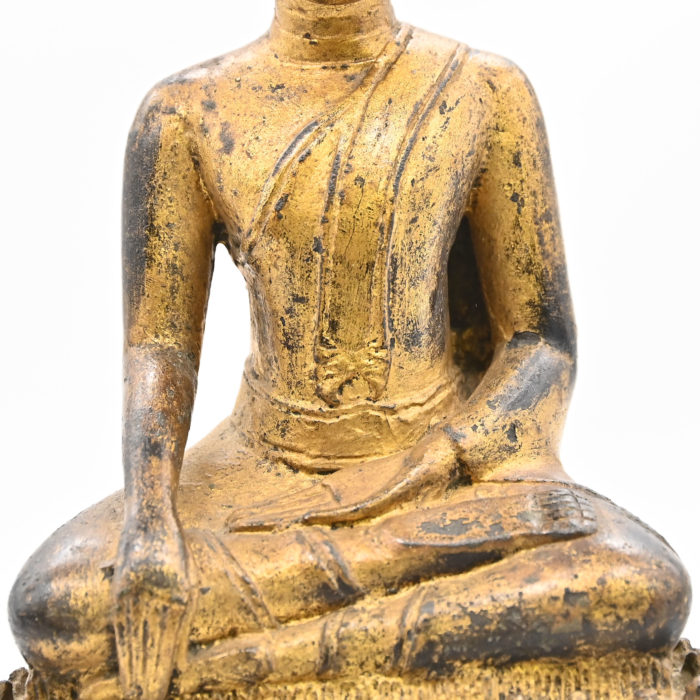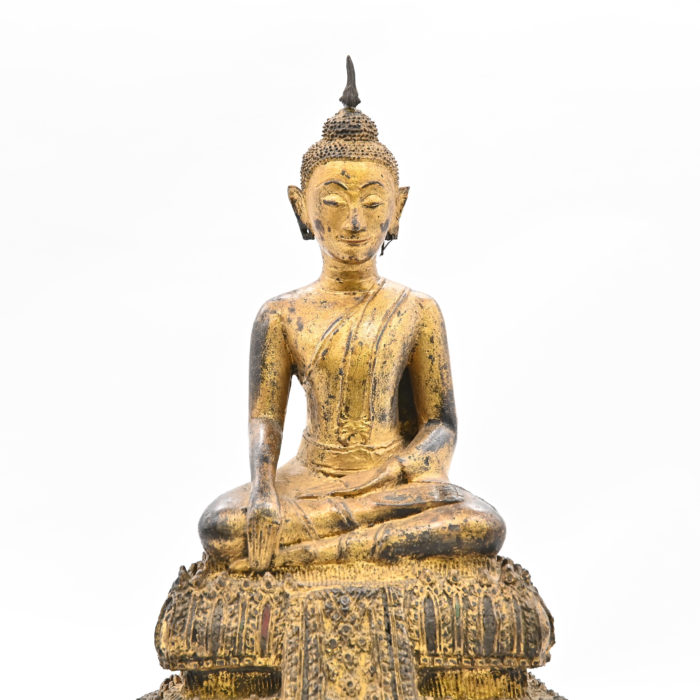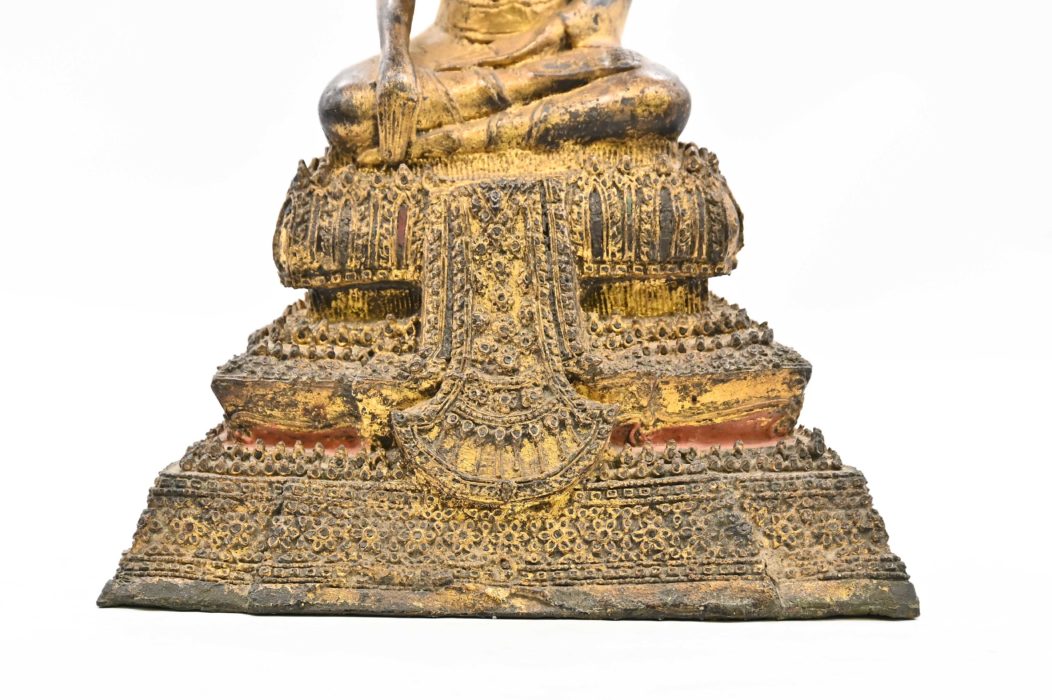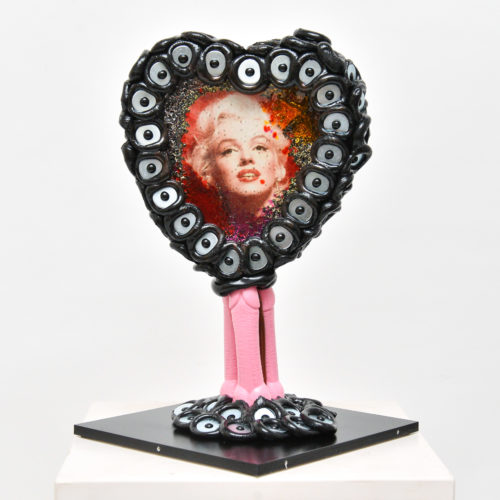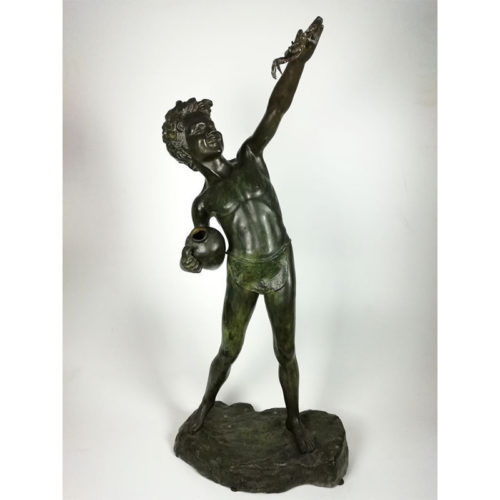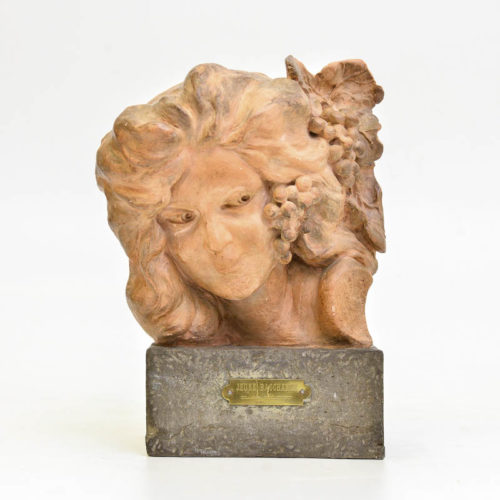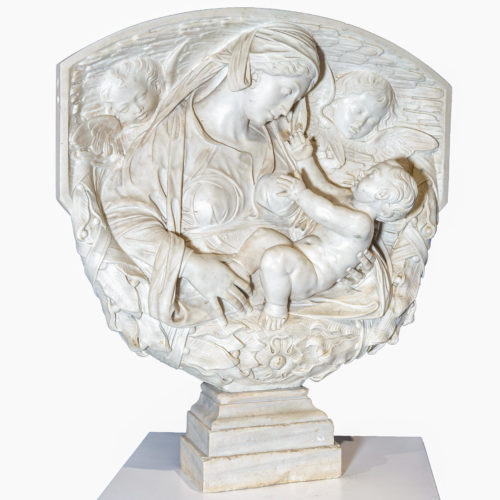Late Ayutthaya gilt bronze Buddha, produced in Siam around 1780.
With authentication from the Oriental Art Department, Antique Silver (18a Northampton square, London, E.C. 1).
The kingdom of Ayutthaya was a state in Siam, present-day Thailand, which existed between 1351 and 1767. It took its name from its capital, Ayutthaya.
The Buddha rests on a multi-layered base, and is represented in the “bhumisparsamudra” position, his right hand resting on his knee with the palm downwards and with the tips of the fingers touching the ground in such a way as to symbolise contact with the divinity of the earth, while the left hand is resting on his lap. With this gesture (mudrā) he demonstrated the attainment of enlightenment. On the top of his head Bhudda has a flame-shaped protuberance, called “uṣṇīṣa”, which represents the radiance of spiritual energy.
Period: circa 1780
Measurements: H 39.5 x W 32.5 x D 22 cm
